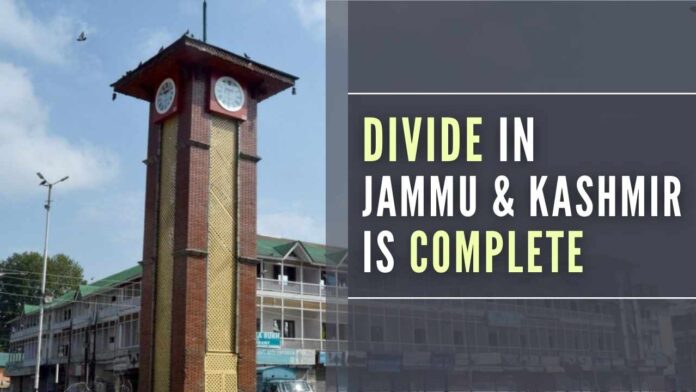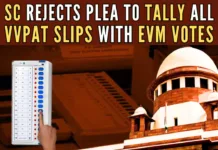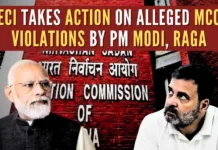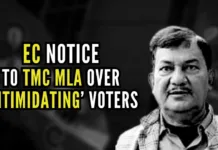
Possible to bridge the wide gulf between the two?
Kashmir became part of the Jammu Kingdom on March 9, 1846, under the Treaty of Amritsar, signed between Raja of Jammu Gulab Singh and the British government. The otherwise historic development didn’t go down well with Kashmir’s religio-political leadership. It opposed tooth and nail the integration of Kashmir into the Jammu Kingdom on purely religious grounds. The fact is that the history of the Dogra kingdom/ Jammu Dogras and Kashmir (read Kashmiri Muslims) between 1846 and 1947 was one of permanent conflict, rancour, bitterness, and animosity.
In between, the Kashmiri Muslim leadership had done all under the sun to get Kashmir “liberated from Dogras”. So much so, they hailed the Governor-General of India, Lord Harding, as “God” in 1924; requested him to dismiss the Dogra Maharaja Pratap Singh and take over J&K State administration; launched the “Quit Kashmir Movement” against Dogras in 1946; submitted almost two dozen petitions against the Dogra rule to the Governor-General of India seeking abrogation of the Treaty of Amritsar; used Punjab-based journals, including Zamidar, Paisa Akhbar, Eastern Times and Kashmir Magazine, to defame the otherwise benevolent Dogra rule; and demanded that “all the government posts in J&K from the office of Provincial Governor to peons” be made the sole preserve of “Kashmiri Muslims”. This is what a peep into the Old English records available with the State Archives Repository, Jammu, shows.
However, in October 1947, the Kashmiri leaders, particularly Sheikh Abdullah and his close associates changed their stance. Instead of pursuing the line the Kashmiri leadership had religiously and consistently pursued between 1846 and 1947, it started demanding autonomy from India not just for Kashmir but also for Jammu province and Ladakh, claiming that Jammu province and Ladakh were also integral parts of Kashmir, which constituted only about 5% of the J&K State’s land area. The worst part of the whole situation was that the Kashmiri leadership got unstinted, unflinching, and unqualified support from the Congress and other “secular” parties and formations controlling New Delhi’s South and North Blocks. Not just this, the bulk of powerful media in Delhi, Calcutta, Bombay, and even outside India, including London, New York, and Washington, promoted the line of religio-political leadership in Kashmir.
The whole point is that the Kashmiri leadership ably backed by New Delhi forced down the throats of Jammu and Ladakh their pernicious ideology and imposed their separatist will on the unwilling people of Jammu and Ladakh, almost all ardent believers in the concept of India and Indian sovereignty and national unity. No wonder then that the exploited, humiliated, taunted, fleeced, drained, marginalized, and discriminated against people of Jammu province and Ladakh protested at regular intervals and put forth from time to time demands ranging from separation from Kashmir to statehood to provincial development council to regional councils to Union Territory. Ladakhi Buddhists left no stone unturned to get freedom from Kashmir. They even took recourse to violent methods, particularly after September 1989. The result was that they got Autonomous Hill Development Council.
The story of Jammu was no different. The people of Jammu too organized massive movements in 1952-53, 1966-67, 1979-81, 1987, 1998, 2008, 2010, and 2015. All these movements, barring the one the nation witnessed in 2008, which culminated in the collapse of the Ghulam Nabi Azad-led coalition government, were aimed at integrating J&K fully into India and persuading the powers-that-be at the Centre to liberate Jammu from the Kashmiri domination; and empower them socially, economically and politically. All these were people’s movements. Sadly, all their efforts went down the drain as the authorities in New Delhi pursued ruthlessly the same old appease-Kashmir policy. The people of Jammu cried but with no result.
It was only in August 2019 that things changed dramatically and in the best interest of the nation. Seditious Article 370 was read down. Discriminatory and illegal Article 35A was abrogated. State Constitution framed by the 100% rigged assembly and the state flag that it introduced on January 26, 1957, became stories of the past. Ladakh was finally liberated from Kashmir and granted UT. The remaining J&K was also reduced to the status of UT but much to the chagrin of the people of Jammu province. They were hoping that New Delhi would also liberate Jammu from Kashmir but all their hopes were dashed to the ground. They were left high and dry and at the mercy of Kashmir.
However, the developments which Kashmir has been witnessing since August 17, 2022, only serve to demonstrate that the divide between Jammu and Kashmir is complete. What happened on August 17? That day, Chief Electoral Officer Hirdesh Kumar held a press conference in Jammu and announced that all non-Kashmiris working, studying, staying, and serving in J&K and all those who will turn 18 years of age on October 1, 2022, will also be enlisted as voters in the voters’ lists. The announcement rattled and enraged the entire Kashmiri leadership and the Congress party. They vehemently opposed the announcement.
Narrow-minded, Kashmir-centric, and fundamentally secessionists as they were, and are, on Monday, February 22, met at the residence of the NC president and People’s Alliance for Gupkar Declaration (PAGD) chairman Farooq Abdullah to chalk out the future course of action calculated to defeating the laws and the rules meant for updating the voters’ lists and enabling the citizens living ordinarily at a particular place to exercise their franchise at the same place.
After the meeting, Farooq Abdullah said that “the leaders who participated in the All Party Meet (APM) at his Gupkar residence unanimously decided to oppose the recent announcement of Election Commission about giving voting rights to non-J&K residents”. “The decision of voting rights to outsiders is ‘totally unacceptable and if needed, we can approach the court to oppose the move’.
J&K’s identity is facing a direct assault as Dogras, Kashmiris, Sikhs, and other communities are losing their identity,” Farooq Abdullah also, inter-alia, said.
To be more precise, all dismissed the announcement as “dangerous, unconstitutional, undemocratic and mischievous” and all in one voice also said that the whole exercise is aimed at changing “Kashmir’s demography”, “improving the poll prospects of the BJP” and “disenfranchising the people of J&K” (in this case Kashmiri Muslims).
And, while denouncing the Election Commission of India and the Union government, these Gupkaris conveniently overlooked the fact that Ghulam Nabi Azad and Mufti Mohammad Sayeed from Kashmir had contested the Lok Sabha election from Washim (Maharashtra) and Muzaffarnagar (UP), respectively, won the election and become Cabinet ministers in the Union government. How could they have the audacity to oppose what the relevant laws and rules governing electoral exercises contemplate and provide for? Their communally motivated, senseless, and undemocratic opposition must be rejected outright and with contempt.
And, by the way, why are the Kashmiri leaders, without any exception, opposing the voting right to what they call “outsiders”? The answer is simple and straight: It will call the age-old Kashmiri bluff and establish that the population of Jammu province is at least 12 lakh more than Kashmir and that Jammu province will get a minimum of 55 out of 90 Assembly seats if the constituencies are delimited de-novo based on the updated voters’ lists. It is hoped all the Jammu-based political actors would rise to the occasion and support all the rules and regulations concerning electoral exercises.
In sum, it can be said that the divide between the two regions is complete and it is impossible to bridge the already rather wide gulf between the two. What, then, is the way out? Separate Jammu province from Kashmir like Ladakh and treat Kashmir, in the words of former President of India R Venkataraman, “separately”.
Note:
1. Text in Blue points to additional data on the topic.
2. The views expressed here are those of the author and do not necessarily represent or reflect the views of PGurus.
PGurus is now on Telegram. Click here to join our channel and stay updated with all the latest news and views
For all the latest updates, download PGurus App.
- ‘Kashmir My core constituency’: Revisiting July 12, 2003 to understand politics, Omar Abdullah-style - March 15, 2024
- Total deviation from traditional approach: Seven takeaways from PM Modi’s March 7 Srinagar visit - March 9, 2024
- Status of political parties: Why is further J&K reorganization imperative? - March 1, 2024










